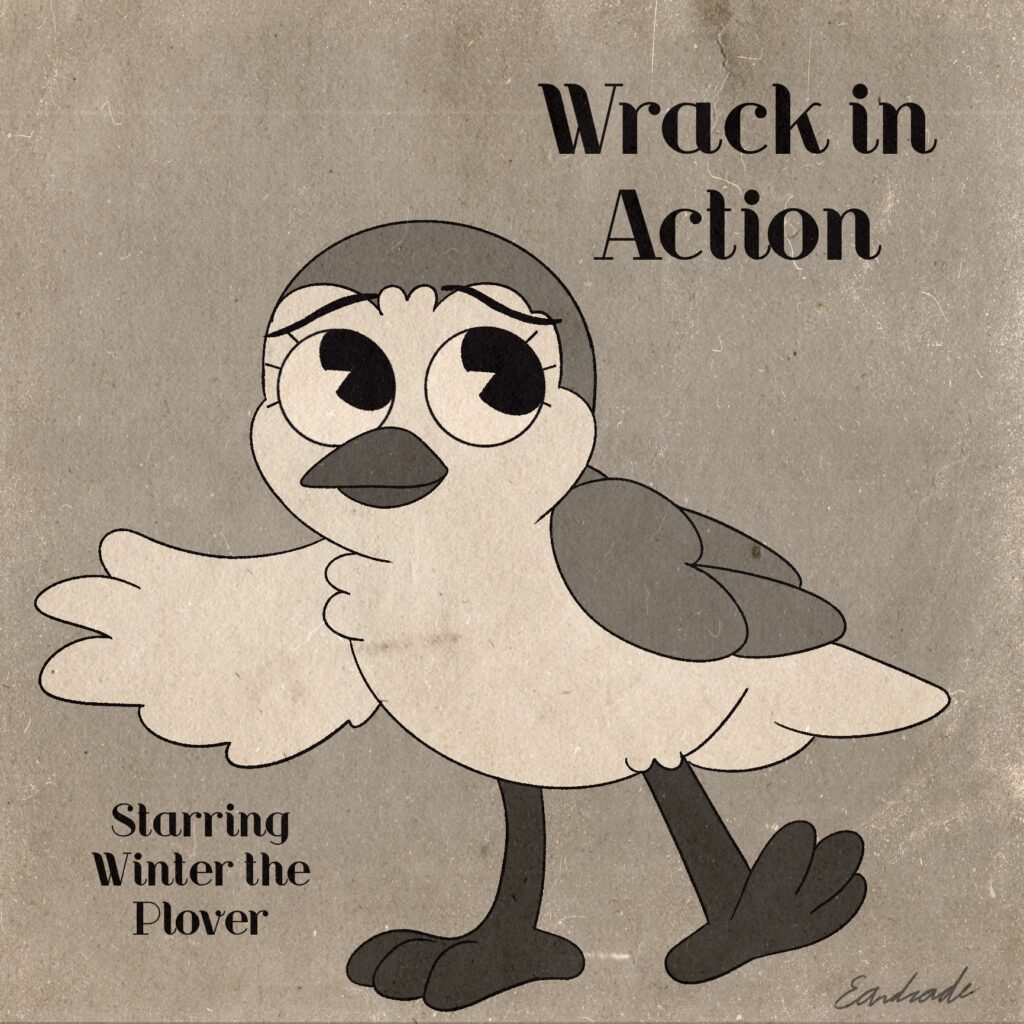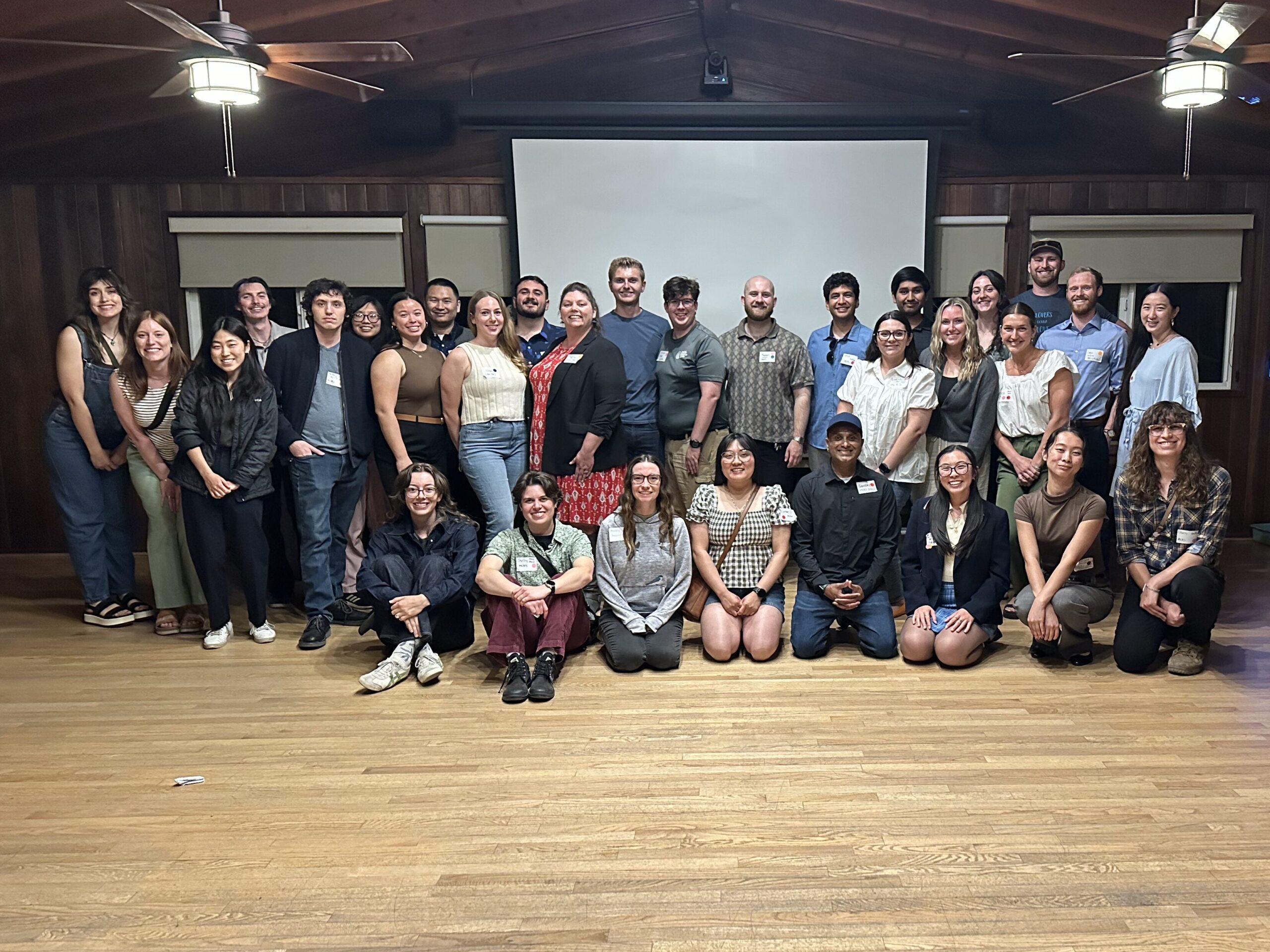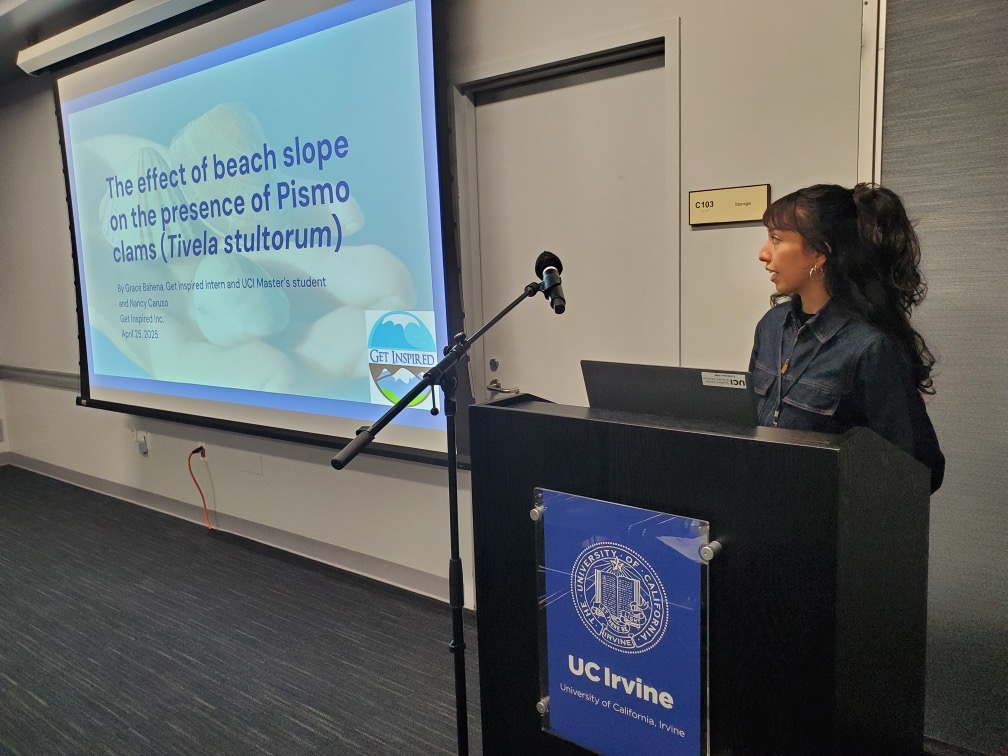Student Blog: Wrack in Action Featuring Winter the Snowy Plover by Evie Andrade

Background
Where do animals on the beach get their food and shelter?
Meet Winter and she is a Western Snowy Plover (Charadrius alexandrinus nivosus). Since Winter lives on a beach in Orange County, California, she is exposed to the following conditions: limited plants to forage or hide in, alternating low and high tide cycles, and occasional coastal storms. Although there are inland areas (areas that are close to the beach but far from the shoreline) that have more vegetation and protection from beach hazards, Winter cannot access them. This is because Western Snowy Plovers have limited energy, which gets depleted quickly when they have to run or fly (The Birds of North America). Additionally, inland areas may expose them to more predators, such as skunks, hawks, dogs, cats, crows, etc.
With these setbacks, how does Winter get food and shelter on the beach? The answer is a pile of rotting seaweed washed up from the tides, also known as beach wrack. Beach wrack has three key features that ensure Winter’s survival on the beach: it is a hot spot for aquatic insects, it can break down into usable nesting materials, and it helps form large sand dunes over time.
Insect Hotspot
As wrack decays and breaks down into smaller pieces on the beach, it attracts insects such as beach hoppers, kelp flies, and rove beetles (Hyndes et al. 2022). This is good news for Winter and other snowy plovers because wrack insects are their main source of food. In other words, wrack is an insect buffet for plovers. The best part is the insect buffet will restock itself. Beetles and flies will often lay their eggs in these piles. Once the eggs hatch, larvae will be in the pile and mature into adults in a few days or weeks (Ince et al. 2007; Palomares 2020). As a result, wrack insects will continue to feed Winter during her time on the beach.
Nest Materials
With Winter’s food source identified, it is time to address the next part of the question: where does she get her shelter? This question can be answered in two different ways: using wrack for nesting materials and living among small sand dunes. On the beach, Winter makes her nest by digging a small pit in the sand (AllAboutBirds). However, she likes to make her nest near large piles of vegetation, specifically wrack piles. Being near the wrack allows her to pluck off pieces to add to her pit, while hiding next to it protects her from potential predators, such as gulls and crows (Paige et al. 1985).
Sand Dune Barriers
As for the second part of the question, Winter lives in an area where the tides can reach hazardous heights. Furthermore, these conditions strengthen during storms. While Winter can use wrack to build her nest in the high tide zone, the rotting pile of seaweed actually provides a secondary source of protection: sand dunes. When wrack piles remain on the beach for a long time, they will start trapping sand inside their pile. As it collects more and more sand over time, it can create large dune piles (Joyce 2022). These piles help protect Winter and the rest of the coastline from crashing waves and storms (Joyce 2022). Even if these dunes erode after a storm, having extra piles of wrack on the beach will ensure more dunes, protection, and shelter for Winter the Plover.
Final Thoughts
Would you like it if someone took away your food and shelter? This scenario is a problem that Winter and her friends are experiencing at this moment. Winter sees rotting seaweed as food and shelter, but beachgoers and tourists may see wrack as nothing more than a smelly annoyance. As a result, they will approve or encourage wrack removal to improve the beach aesthetic. Unfortunately, this practice has a negative impact on Winter and her friends (Dugen et Hubbard 2010).
Luckily there are ways you can help. Researching or hiking in the coastal dune or sandy shore habitat is a great way to learn more about Winter’s home. If you are lucky, you can see wrack in action. There are zones in Orange County where plovers are protected and can enjoy their wrack food and shelter in peace. Advocating to protect beach wrack and communicate snowy plover protection will ensure that Winter’s main source for food and shelter will be permanently protected.
Work Cited & Links
Dugan, J. E., & Hubbard, D. M. (2010). Loss of coastal strand habitat in southern California: the role of beach grooming. Estuaries and Coasts, 33(1), 67-77.
Hyndes, Glenn A., et al. “The role of inputs of marine wrack and carrion in sandy‐beach ecosystems: a global review.” Biological Reviews (2022).
Ince, Rebecca, et al. “Marine macrophytes directly enhance abundances of sandy beach fauna through provision of food and habitat.” Estuarine, Coastal and Shelf Science 74.1-2 (2007): 77-86.
Page, Gary W., Lynne E. Stenzel, and Christine A. Ribic. “Nest site selection and clutch predation in the Snowy Plover.” The Auk 102.2 (1985): 347-353.
Palomares, Marisol. “Algal wrack community composition and succession on a sandy beach in San Diego, CA.” (2020).




